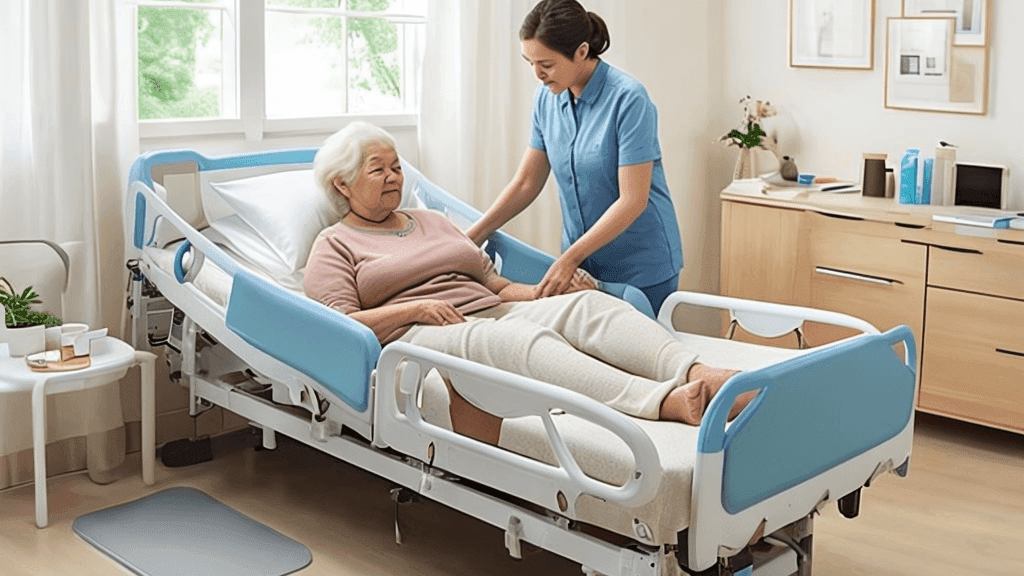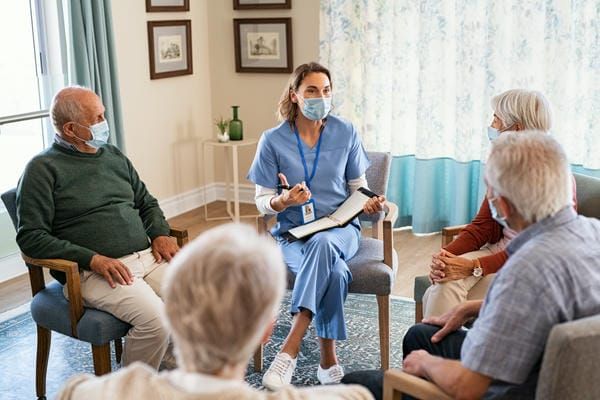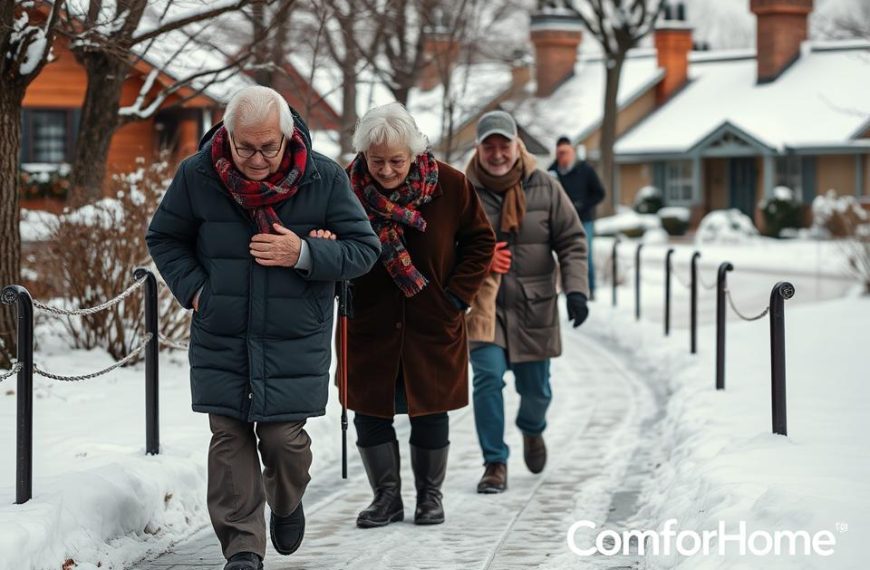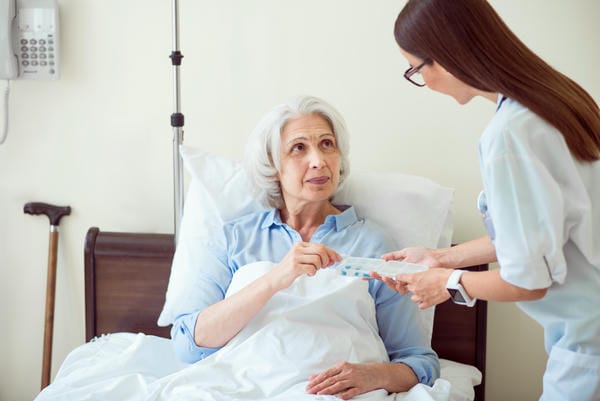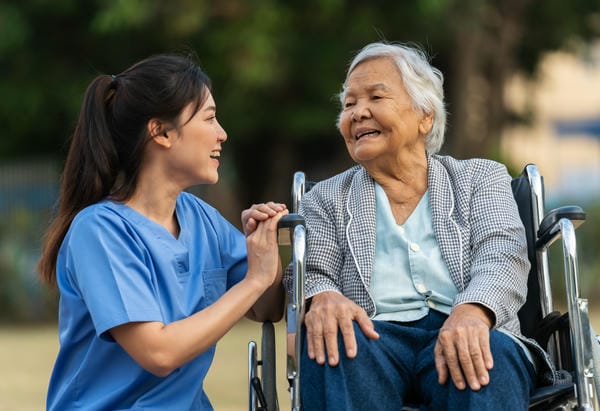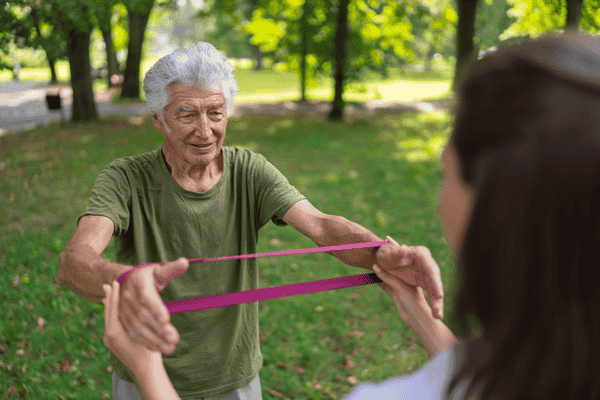When I first started working with Martha, an 87-year-old former librarian who had become bed-bound following a stroke, her daughter Janet was beside herself with worry. “She’s fallen twice this month,” Janet confided, her voice tight with concern. “The last time, we found her on the floor at 3 AM. I’m terrified she’ll break a hip next time.”
This scenario plays out in countless homes and care facilities across the country. Falls from beds represent one of the most serious safety risks for our elderly loved ones, particularly those who are bed-bound due to illness, injury, or age-related frailty. These incidents not only cause physical injuries but can trigger a cascade of complications that significantly impact quality of life and independence.
Understanding the Gravity of Bed Falls in Seniors
“The bedroom should be a sanctuary, not a hazard zone,” says Dr. Eleanor Simmons, a geriatrician with over 20 years of experience in senior care. “Yet for many bed-bound seniors, their bed—where they spend most of their time—becomes a potential danger rather than a place of rest.”
Statistics paint a sobering picture: falls are the leading cause of fatal and non-fatal injuries among adults aged 65 and older. For bed-bound seniors, the risk is even more pronounced. Nearly 37% of facility-reported falls occur from beds, and the consequences can be devastating.
When a senior falls from bed, the injuries can range from minor bruising to life-threatening trauma. Hip fractures, which occur in about 300,000 older adults annually, are particularly common and dangerous. Research shows that approximately 20% of seniors who suffer hip fractures die within a year due to complications, while many others never regain their previous level of independence.
Beyond the physical trauma, there’s also what geriatric specialists call “post-fall syndrome”—a psychological aftermath characterized by fear, anxiety, and loss of confidence that can lead to further restriction of activities and declining health.
Identifying Risk Factors: Who’s Most Vulnerable?
Understanding who’s at greatest risk represents the first step in prevention. Several factors significantly increase the likelihood of bed falls among seniors:
Cognitive Impairment
Dementia and other cognitive conditions can cause disorientation, especially during nighttime hours when “sundowning” symptoms often intensify. Martha, the former librarian I mentioned earlier, would frequently become confused after dark, forgetting her limitations and attempting to get out of bed unassisted.
“It’s not that they’re being difficult,” explains Nurse Practitioner Thomas Chen. “Their brain is processing information differently. They may forget they can’t walk, or they might not recognize where they are. Some even see things that aren’t there and try to respond to these hallucinations.”
Medication Effects
Many commonly prescribed medications can increase fall risk. These include:
Sleep aids and sedatives that may cause grogginess and disorientation Antihypertensives that can lead to orthostatic hypotension (sudden blood pressure drops when changing positions) Psychotropic medications that affect balance and coordination Diuretics that increase nighttime bathroom urgency
“I had one patient who was on three different medications that all listed dizziness as a side effect,” Dr. Simmons recalls. “No wonder she kept trying to get up and falling! We adjusted her medication schedule, and the falls stopped almost immediately.”
Physical Limitations
Muscle weakness, particularly in the lower extremities, significantly impairs a senior’s ability to balance when attempting to get in or out of bed. Conditions like arthritis can restrict movement, making it difficult to safely navigate bed edges.
Janet noticed that her mother’s left side, weakened by her stroke, would often slide off the mattress when Martha tried to reposition herself. “It’s like her body betrays her,” Janet observed. “She thinks she can move normally, but then suddenly finds herself tipping over.”
Environmental Hazards
Even the bed itself can pose risks. Beds that are too high make it difficult for seniors to safely place their feet on the floor. Mattresses that are too soft can create uneven surfaces that throw off balance. Insufficient lighting may make it hard to see potential obstacles, while clutter around the bed creates tripping hazards.
Comprehensive Prevention Strategies
Effective fall prevention requires a multifaceted approach tailored to each senior’s specific needs. Here’s how healthcare professionals and caregivers can create safer environments for bed-bound loved ones:
Physical Modifications to the Sleeping Environment
Bed Height Adjustments
The ideal bed height allows the senior’s feet to rest flat on the floor when sitting on the edge of the bed with knees bent at approximately 90 degrees. For many seniors, this means lowering the bed platform or choosing a bed specifically designed for elder safety.
“After my father’s second fall, we replaced his antique bed with an adjustable hospital-style bed,” says Miguel, a caregiver to his 90-year-old father. “It was a difficult decision emotionally—that bed had been in our family for generations—but his safety had to come first.”
For those unable to invest in new furniture, bed risers can lower existing beds, while step stools with handrails can help bridge the gap for beds that cannot be lowered. In extreme cases, placing a mattress directly on the floor eliminates the fall height, though this approach comes with its own challenges regarding dignity and ease of care.
Strategic Rail Systems
Bed rails, when properly installed and used, can prevent accidental rolling from the bed while providing assistance with repositioning. However, they require careful consideration:
Full-length rails may create entrapment hazards and are generally not recommended for confused patients Half-rails or three-quarter rails provide support while allowing for controlled exits Padded rails reduce injury risk if the person does make contact with them
“We don’t want to create a situation where we’re trading one safety issue for another,” cautions occupational therapist Lisa Freeman. “Improperly used bed rails have caused serious injuries and even deaths from entrapment. They’re not appropriate for every senior.”
For those concerned about rails, alternatives include bed bumpers (foam wedges that create a barrier at the edge of the mattress) and bolster cushions that provide a gentler reminder of bed boundaries without the restriction of rails.
Support Surfaces
The mattress itself plays a crucial role in fall prevention. Memory foam mattresses contour to the body, reducing the likelihood of shifting and rolling. Edge-reinforced mattresses provide more stable surfaces when seniors sit on the bed edge.
For added protection, floor mats designed specifically for fall prevention can be placed alongside the bed. These high-density foam mats absorb impact if a fall does occur, potentially reducing injury severity by up to 50%, according to some studies.
Monitoring and Alert Systems
Technology offers valuable tools for preventing bed falls, particularly for seniors who live alone or have caregivers who cannot provide 24-hour supervision.
Bed Alarms
These devices detect when a person attempts to leave the bed and trigger an alert to caregivers. Options include:
Pressure-sensitive pads placed under the sheet that activate when weight is removed Infrared beam systems that detect movement across a specific threshold Wearable devices that detect changes in position consistent with bed exit attempts
“The bed alarm gave us peace of mind during the night,” says Darlene, who cares for her mother with Alzheimer’s. “Before, I was waking up every hour to check on her. Now, I can sleep knowing I’ll be alerted if she tries to get up.”
Video Monitoring
For families comfortable with this approach, camera systems allow remote monitoring while respecting privacy. Many systems offer motion detection, night vision capabilities, and smartphone alerts.
“We installed a simple camera system in my father’s room,” Miguel explains. “It’s angled to show only the bed and immediate surroundings, and it gives us the ability to quickly check if he needs help without disturbing his sleep by entering the room.”
Call Systems
Ensuring seniors have an easy way to call for assistance can prevent dangerous solo attempts at getting out of bed. Options range from traditional call bells to voice-activated smart home systems that allow the senior to request help using simple voice commands.
Personalized Care Approaches
Beyond physical modifications, individualized care strategies dramatically reduce fall risk.
Regular Toileting Schedules
Many nighttime falls occur when seniors attempt to reach the bathroom. Implementing a regular toileting schedule—typically every two to three hours during waking hours and once during the night—can prevent urgent bathroom needs.
For bed-bound individuals, properly fitted bedside commodes or expertly managed incontinence care eliminates the need for bathroom trips entirely.
Medication Management
A thorough review of medication regimens can identify fall risks that might be mitigated by:
Adjusting dosing schedules (moving diuretics to morning rather than evening) Finding alternatives to high-risk medications Consolidating medications to reduce overall side effect burden
“We worked with Martha’s doctor to shift her blood pressure medication to morning only,” Janet tells me. “That small change made a huge difference in her stability during the evening hours.”
Physical Strengthening
Even bed-bound seniors can benefit from appropriate exercise programs. Bed-based resistance exercises maintain muscle strength, while range-of-motion activities preserve joint function.
Physical therapist Maria Gonzalez recommends simple daily routines: “Even ankle pumps, gentle knee lifts, and arm circles make a difference. For seniors who can tolerate it, practicing the motions needed to safely get in and out of bed builds both strength and procedural memory.”
Cognitive Strategies
For seniors with cognitive impairment, consistent routines and environmental cues provide orientation and reduce anxiety-driven attempts to leave the bed. Some helpful approaches include:
Maintaining consistent caregivers when possible Using night lights to reduce confusion during darkness Providing clear, simple reminders about calling for assistance Using reassuring explanations before bedtime about where they are and that someone will help them if needed
Implementation: Creating a Customized Fall Prevention Plan
While the strategies above provide a framework, effective fall prevention requires customization based on individual needs and circumstances. Consider this step-by-step approach:
- Conduct a thorough assessment of the senior’s specific risk factors, considering their medical conditions, medication regimen, cognitive status, and physical abilities.
- Consult healthcare professionals including the primary care provider, a physical therapist, and possibly an occupational therapist who can evaluate the home environment.
- Prioritize interventions based on the most significant risk factors identified. For someone with dementia and nighttime wandering, monitoring systems might take precedence, while someone with physical frailty might benefit most from environmental modifications.
- Implement changes gradually, focusing on the most critical areas first. This prevents overwhelming both caregivers and seniors with too many simultaneous changes.
- Evaluate effectiveness by tracking incidents and near-misses. Be prepared to adjust strategies as the senior’s condition changes over time.
- Re-assess regularly, as fall risk factors evolve with changes in health status, medication, and progression of underlying conditions.
Balancing Safety with Dignity and Independence
Throughout the fall prevention process, it’s essential to consider the psychological impact of safety measures. Many seniors resist changes they perceive as limiting their independence or infantilizing them.
When I suggested bed rails to Martha and Janet, Martha immediately objected. “I’m not a child in a crib,” she said firmly. We pivoted to bed bumpers instead—less visible and institutional-feeling, but still providing a physical boundary to prevent rolling.
“The most successful fall prevention plans account for the senior’s preferences and preserve their dignity,” notes social worker Keisha Williams. “Involving them in decisions when possible and explaining the reasoning behind changes helps secure their cooperation.”
For Martha, this meant presenting options and letting her choose which she preferred. It meant using equipment that looked more residential than medical when possible. And it meant acknowledging her frustration while gently explaining how each safety measure helped preserve, rather than restrict, her independence by preventing injuries that would further limit her options.
When Falls Occur Despite Prevention Efforts
Even with comprehensive prevention strategies, falls may still happen. Preparing for this possibility is part of complete care planning.
“Have an emergency response plan in place,” advises Dr. Simmons. “This includes knowing how to safely help someone who has fallen, when to call emergency services, and having important medical information readily available.”
Caregivers should be trained in proper lifting techniques—or better yet, in how to use mechanical lifting devices for seniors who cannot assist with their own transfers after a fall. Many physical therapists offer training sessions specifically for family caregivers.
After any fall, a thorough reassessment is crucial. Each incident provides information that can help prevent future occurrences by identifying gaps in the current prevention strategy.
Conclusion: A Commitment to Ongoing Vigilance
Preventing falls from beds in bed-bound seniors requires dedication, creativity, and persistent attention to changing needs. The effort invested pays tremendous dividends in avoided suffering, preserved independence, and peace of mind for both seniors and their caregivers.
Six months after implementing our comprehensive fall prevention plan, Janet reported a dramatic change. “No falls in five months,” she told me proudly. “Mom’s happier too—she’s sleeping better because she feels secure, and so am I.”
By approaching bed fall prevention with both technical knowledge and compassionate understanding, we can create environments where our bed-bound seniors remain safe without sacrificing dignity—environments where beds return to their proper role as places of comfort and rest rather than sources of danger and fear.
